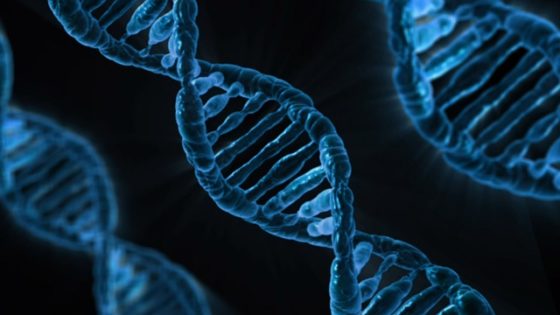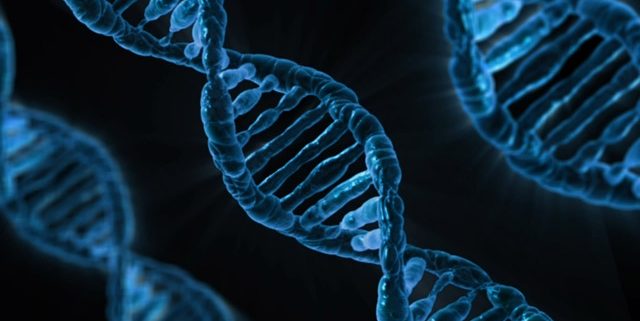Designer Children: What Does Gene Editing Technology Mean For Parents?

Contents
What Is Gene Editing?
Our genes are the code that our bodies are built on. We inherit them from our parents and they give us our physical appearance and our predispositions to certain disease or conditions. We used to believe that genes functioned in a straightforward way, but recent research suggests that environmental factors can physically affect the way our genes work. That’s called “epigenetics.” For example, a process called “DNA methylation,” can prevent a given gene or set of genes from being used by your cells.
The process of evolution happens as different sets of DNA get expressed differently – no genetic mutations, no evolution! Mutations that make life easier often get passed on, while those that make people less likely to survive and reproduce often don’t. That’s why, historically, ethnic groups that developed farther from the equator tend to have fair skin (which helps them produce more vitamin D in scarce sunlight) and groups that developed nearer to the equator tend to have darker skin (to protect them from the constant sunlight).
That kind of genetic modification happens very, very slowly – over thousands of years or more. But today, the technology for true gene editing is available. Gene editing is the ability to go in and change the DNA of a fertilized egg and change or switch out specific genes. People have been working on this technology for a while, but until now the methods have been relatively unreliable and inaccurate. They’ve been used on plants (like GMOs) but have never been suitable for humans. Now, a new technology called CRISPR/Cas9 0ffers precise, reliable editing that may be viable for use in people.
What Does That Mean For Us?
Gene editing has always been a controversial subject. Consider the argument about GMO crops – crops that have had their DNA altered to make them grow faster, be more resistant to bugs, or otherwise improve them over non-modified crops. Current research suggests that they’re safe, but many people are still concerned about the potential consequences of modifying our food.
Now, consider the possibilities of editing our own children’s genes. We’re not talking about better crops here. We’re talking about eliminating genetic diseases – no more Down syndrome, Huntington’s, cystic fibrosis, and other severe genetic conditions. We could wipe out many birth defects. We could potentially decrease the likelihood that our children would get certain kinds of cancers. We could decrease the likelihood that they’ll become obese.
But health issues aren’t the only potential use. We’re also talking about choosing the color of their eyes, hair, and skin. Tweaking their DNA so they’re more likely to have very high intelligence or to be very athletic. This is the question of “designer children” and it’s a really tough ethical area.
Gene Editing Access
Like all new technologies, gene editing (if it is eventually approved for human use) is probably going to be very expensive. Maybe health insurance will cover editing for diseases and cancers, but it seems less likely that they’d cover aesthetic choices or other tweaks. And that means the only people who will be able to afford those things will be very wealthy. So, we run the risk of a wealthy class choosing specific aesthetics and creating children that will be able to perform better in school and in other areas. To many, that seems like an unfair advantage. That said, like all new technologies, the price will come down as more people use it. Eventually, the middle class would also have the ability to make their children’s genes more competitive.
There are also ethical concerns about what people will choose to change. Given historical trends, many worry that we could end up with a population of blond-haired, blue-eyed, superintelligent, genetically modified people.
The Process And Risks
Finally, there are ethical concerns about the process itself. Do we have the right to tweak our children’s DNA? If we can prevent them from developing diseases and give them an advantage in life, do we have the right to leave it to random chance? It’s a tough question. In addition, this kind of gene editing is called “baseline” editing – it becomes a permanent part of their DNA and passes on to their children. So we’re not only choosing for our children. Every later generation will carry those genes as well (although they may not be expressed, since half of their genes would come from another parent).
We also don’t know enough about the process (or our own DNA) to be able to guarantee outcomes. It’s going to take a lot of testing to figure out how to use gene editing technology safely on humans – we just don’t know how changing our DNA might play out. It could be that a minor tweak to prevent a genetic disease could cause serious side effects down the road. So we may end up choosing between letting a child develop Huntington’s disease or hoping that the gene editing to prevent it doesn’t hurt them in the long run.
The Future Of Gene Editing
The thing about this kind of technology is that now that it exists, it’s going to be used. We may very well decide to ban it in the US because of ethical concerns, but that doesn’t mean it won’t be used elsewhere. We may end up in a situation where anyone who can afford to travel to less-restrictive jurisdictions can have gene editing while those stuck Stateside cannot. Or perhaps US citizens will stick with their natural baselines while the folks in other countries slowly change themselves.
There are no easy answers here. Is it safe? Is it right to do it? Is it right not to? We’re going to have to face those questions sooner or later.
What do you think about gene editing and designer children? Let us know in the comments!








Leave a Reply
Want to join the discussion?Feel free to contribute!